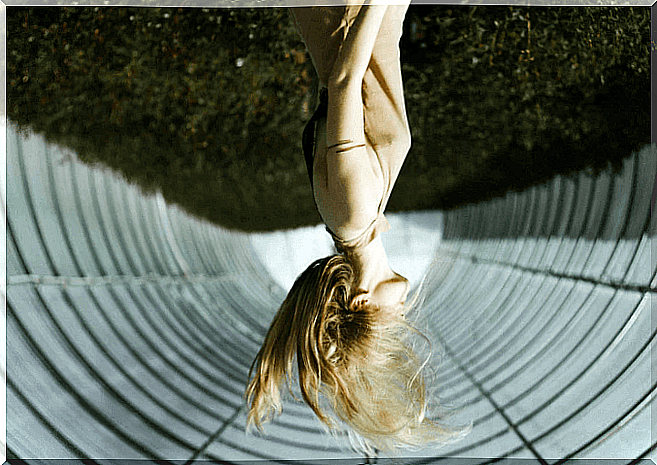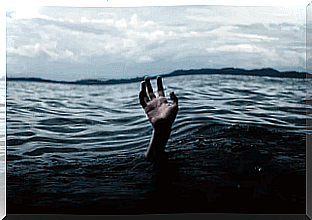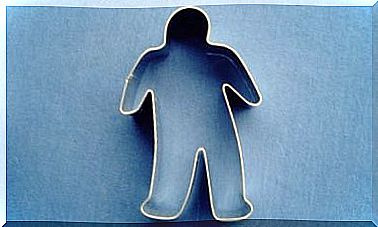Emotional Imagination, A Technique To Reduce Anxiety

Anxiety is that monster that chases us and prevents us from enjoying the here and now. So much so, that many days, before getting out of bed, we are already overwhelmed by everything we have to do in the hours, weeks and months that follow.
We have these concerns so internalized … that they end up forming part of us and sneaking into our thoughts on a whim, when we do not notice their presence constantly, as if they were a backdrop for everything we do or a threatening shadow that does not even go away. When the sun goes down
But, is it possible to live beyond ” I have to do this “, ” I have to finish the other thing “, ” Tomorrow I have to … “, ” Surely my boss will send me more tasks when I walk through the door “, etc.? Read on and discover what emotional imagination is!
What is the emotional imagination?
Emotional imagination is a psychological technique that is part of the Rational Emotive Behavioral Therapy of Albert Ellis, one of the most recognized psychotherapists of all time. This therapy is based on the cognitive-behavioral approach, the one with the greatest empirical support among all currents in psychology. In other words, its use has been verified and validated by numerous studies.
Don’t we all want that when we go to the psychologist? Unfortunately, we always hear from acquaintances or have our own experience of having gone to therapy and that they have not helped us. Although it cannot be generalized nor is it an irrefutable guarantee, going to a cognitive behavioral therapist can be really effective and helpful.
Why use the emotional imagination?
Now, to understand why emotional imagination can be useful to us, we have to understand what is postulated from the cognitive-behavioral current about emotions. These are responses of our body to changes in the external or internal environment. That is, emotions can appear from things that happen around us, but also from thoughts that appear in our minds.
In fact, these thoughts are a fundamental part of the question that concerns us. What the emotional imagination will try to do is give us tools to be able to modify and manage that negative internal speech that often makes it easier for negative emotions to skyrocket.

I give you an example: you are driving quietly on the highway and, when you are going to overtake a car in the left lane, another appears behind you at full speed and hits you. Faced with this situation, there are people who will think “but how can you drive so aggressively? Don’t you see that as long as you have to brake, we are going to have an accident? But who does he think he is to go like this? ” . How do you think these people feel generating these types of thoughts? How do you feel when you think like this?
Emotions such as anxiety and anger will surely appear. Logical, right? Now, there are other people who may have a different internal discourse: “well, you can hit all you want … I’m going to continue at this speed until I pass the car, it’s your problem if you’re in a hurry and can’t wait” . On this occasion, even if some anxiety or anger appears, the intensity of these emotions will be less, you see?
How is the emotional imagination used?
To use emotional imagination, the first thing we have to take into account is our capacity for imagination. If we are struggling a lot, we may first need a series of training exercises to increase our skills in this regard.
First of all, we have to think about a certain situation that causes us anxiety. Once we have it in our head, we have to think about all the details of what is “happening” and that generates such a degree of discomfort.
Next, we will seek to feel other negative emotions but that are not so disturbing. That is, we have to make more appropriate and moderate negative emotions appear. Of course, it is important to bear in mind that we cannot modify anything in the imagined situation: the change of emotion must occur through an exercise of the person.
Once we have achieved this, we have to verbalize those thoughts that have appeared and that have helped us to get our negative emotions to become more adaptive. Following the example of the car that sticks to us, we would have to try to find the thoughts that I said in the second situation.

What are the benefits of emotional imagination?
Imagination is a tool that, well used and trained, can greatly facilitate the regulation of our emotions. In addition, the positive thing about cognitive-behavioral techniques is that they are complementary, so that different tools can be used depending on the situation.
In this sense, emotional imagination is an “extra” that helps us in a central aspect – the management of dysfunctional and little adaptive thoughts – to reduce our discomfort. As is easy to imagine, even though we understand the importance of learning to do this, it is often difficult for us to do so in therapy.
Here, the emotional imagination can help us to think more carefully and critically about those concerns and fears that we have. In addition, it helps us correct past mistakes and trains us in rational skills to prevent them from being repeated in the future. But not only that, it helps us improve our self-esteem and our confidence, seeing that we are better able to face situations that cause us discomfort.
In short, it helps us to re-educate ourselves emotionally. Even so, we must not forget that, if one feels a great discomfort, the first step to regain control of our life is to go to a suitable psychologist. This professional is going to be the one who is going to help us acquire the appropriate strategies so that we can regain control… Let’s work to better regulate our anxiety!
Images courtesy of Tanja Heffner, Davide Ragusa, and Ian Espinosa.









